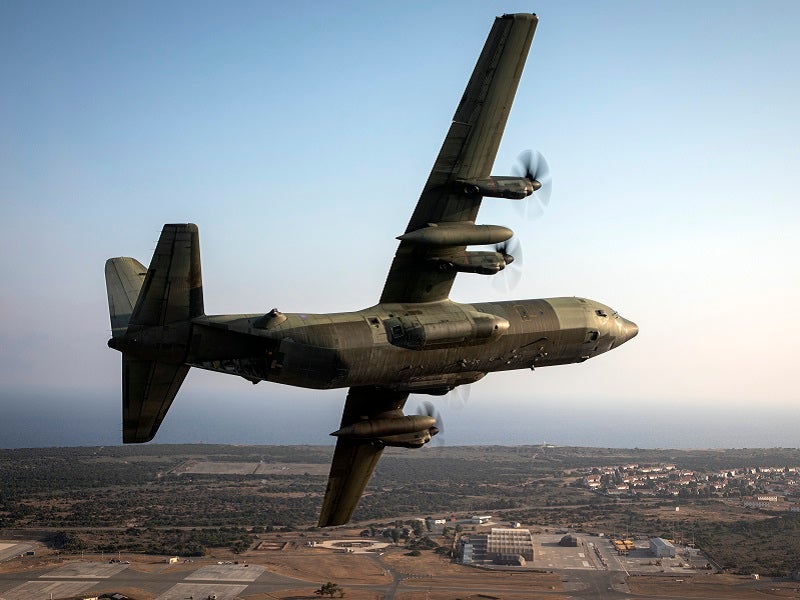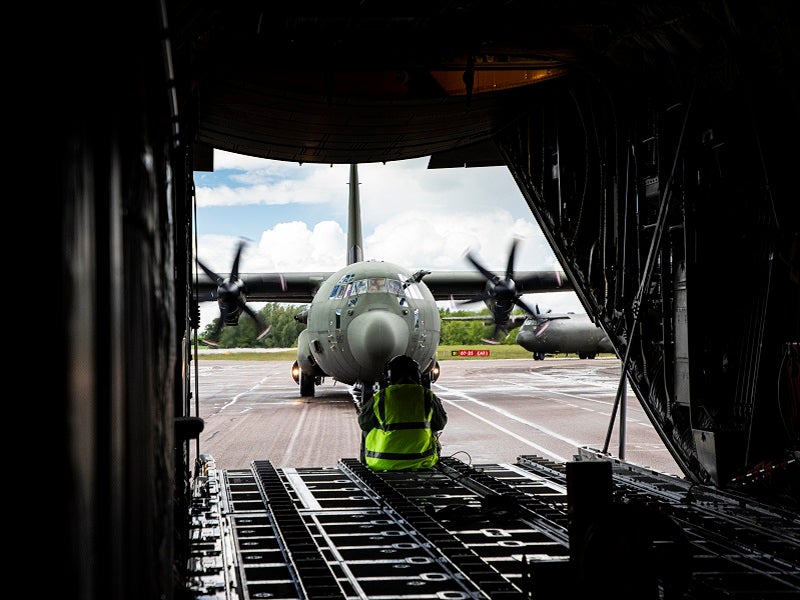
The UK Ministry of Defence (MoD) has added the Royal Air Force’s (RAF) C-130J fleet to its list of military equipment that will be made available for sale through the Defence Equipment Sales Authority (DESA) from 2023, which is slated to be the out-of-service date for the type.
Operated as a tactical airlift aircraft, the C-130J Super Hercules is in service with numerous military services around the world and has gained a notable reputation of reliability and ruggedness, able to operate from improvised landing strips. For these reasons, special forces in particular are known to utilise the platform to conduct clandestine operations.
The withdrawal of the 14-strong C-130J fleet for the RAF will be a blow to the service’s airlift capability, although the induction of the larger A400 Atlas is intended to offset the loss. According to a DESA brochure, added to the Defence Equipment and Support equipment sale list, the UK’s C-130J fleet will be made available for acquisition as they come out of service “between 2023 and 2025”.
UK-based company Marshall Aerospace was named as the “principal retail partner” for the sale of the C-130Js, and would provide entry into service, sustainment and capability enhancements where required.

The decision to cut the C-130Js from UK service was announced in the 2021 Defence Command Paper, which set out the latest in a long line of restructures of the country’s military. The move has been hotly debated ever since, with UK parliamentarians regularly bringing up the loss of the C-130Js as being detrimental to operational capability.
While the Atlas is intended to perform the roles the C-130J currently performs, it is still undergoing workup to qualify for specialist tasks. In September this year the British Army conducted its first para-drops from the A400, a function currently performed by the C-130J.
Atlas to the rescue
The Atlas platform also assists in the maritime patrol role, performing the task when on-station at RAF Mount Pleasant in the Falkland Islands, and aids UK-based assets when required. On 15 October an Atlas A400M and a Poseidon P-8 maritime patrol aircraft combined to locate and aid in the rescue of a civilian yacht that had lost its mast in stormy seas, 700 nautical miles west of Ireland.
According to an RAF release, the Atlas paradropped its Air Sea Rescue Apparatus (ASRA) to the yacht through a rear ramp drop. This was the first mission where the A400 employed the ASRA equipment in action, resulting in the safe recovery of the at-risk sailor.
| Specifications | C-130J Super Hercules | A400M Atlas |
| Max payload | 19,958kg | 37,000kg |
| Max range | 3,334km | 7,593km |
| Max speed | 645km/h | 741km/h |
| Max altitude | 8,535m | 12,000m |
Comparing the two platforms, the Atlas has a greater endurance, speed, and payload to the C-130J. However, while the Atlas could undertake much, if not all, of the C-130Js function over time, the loss of the UK’s Super Hercules fleet still represents a cut in airframe numbers, with suggestions of additional A400M purchases looking increasingly unlikely given the additional cuts likely to be required to balance the MoD’s budget.
Defence funding crisis?
The listing of the UK’s C-130J fleet comes as the defence budget looks set to take a hit following the financial downturn in the country’s economy, which will almost certainly fall into a recession caused by a range of factors, including the disastrous mini-budget from ex-Chancellor Kwasi Kwarteng, who lasted a mere 38 days in the post. International markets reacted badly to Kwarteng’s proposals, resulting in his firing by current UK Prime Minister Liz Truss.
Meanwhile, newly appointed Chancellor Jeremy Hunt has said that all UK Government departments will have to find “efficiency savings” as part of a root-and-branch rethink of the country’s financial approach, which includes the MoD. To this end, defence equipment sales would offer a way to cut sustainment costs while also generating some funds that could be returned to the ministry for use elsewhere.
According to GlobalData the UK defence budget grew by only 1% in 2022 to $63.9bn, up from $63.3bn in 2021.
The current Prime Minister had called for defence spending to increase to 3% of GDP by 2030, up from around 2.5% by the previous incumbent, Boris Johnson. However, it is now likely that defence spending will fall as a result of the drive for savings, a weakened currency, and double-digit inflation look set to carve another fiscal black hole into the budget.



